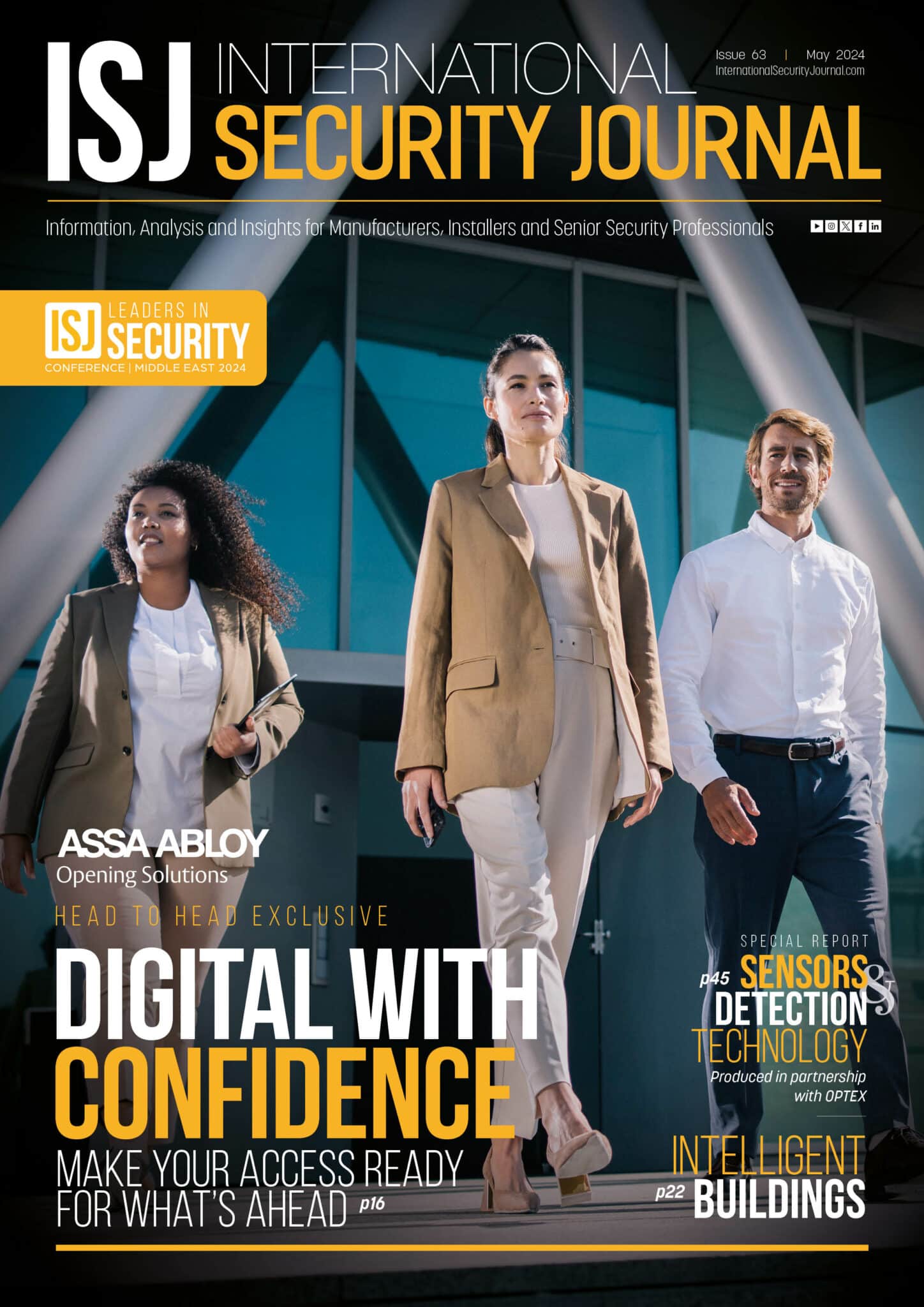Enterprise security: Harness the potential


James Thorpe
Share this content
Jason Kaveney, Director of Product Management, Brivo explains how integrated access control systems enhance security, situational awareness and user experience.
Mankind has been building structures for a long time.
But, it’s taken roughly 400,000 years since the first dwelling was constructed to generate, collect and leverage the multitude of data associated with the facilities we use.
That data includes door opens and shuts, room and building occupancy, lighting use, power consumption, elevator trips, loading dock deliveries and so on.
Thanks to the explosion of smart buildings and IoT devices over the last decade, we are finally beginning to capture, analyse and use this data in a meaningful way.
Integrated cloud-based access control has emerged as a centrepiece of an ecosystem that gives facilities managers centralised situational awareness throughout the enterprise.
A mobile, open-API-based solution transforms the end user experience for employees, vendors, visitors, facilities managers and systems administrators.
Employees gain friction-free access to their physical and virtual working space.
Vendors and visitors receive permissions and access tailored to their role, physical location and schedule for the day.
Facilities managers and administrators obtain a centralised view of building operations, enabling them to identify abnormalities and create efficiencies (using certain meeting rooms saves energy).
Organisations can now offer enhanced experiences, generate performance benchmarks, satisfy ever-evolving regulatory requirements and, simply put, use their spaces better than ever before.
It all starts with access control.
Enhancing situational awareness
Historically, access data has been seen as “set it and forget it.”
It has been used for operational activities, and occasional investigations and audits, but not for its strategic value. That has changed.
With the industry now embracing cloud-based access control, facilities managers can achieve operational oversight of their properties through a single dashboard.
Instead of requiring manual intervention, the system collects and processes information from multiple devices in real time and uses it to synthesise insights instantly.
With access control at its centre, the system enables quicker and more informed decision making: It can gauge operations, identify patterns and normal ranges for everything from door entries and elevator use to power consumption and room occupancy.
The system can then detect trends or outliers that may indicate foul play, negligent behaviour or systemic flaws that would be unnoticed by the human eye.
Consider a chain of boutique fitness facilities that offer their members 24-hour access.
Typically, it’s not cost-effective to staff these gyms during overnight hours, so members receive credentials to enter when the doors are locked. But doing so creates risks on all sides.
What if members are bringing non-member friends to the gym after hours? What if dumbbells or restroom amenities go missing, a treadmill suddenly stops working or a leak or a blackout endangers clubgoers?
On the other hand, user convenience is paramount in these operations. What if members forget their access credentials?
Can management grant them access remotely, including knowing which specific facilities they may enter?
Cloud-based access control integrated with video surveillance and intercoms gives management eyes and ears on the various properties.
They can make sure they are accommodating members who have forgotten their credentials – verifying their identity through video and/or intercoms – as well as ensure members are not abusing privileges by letting in non-members, bringing home expensive gear or mistreating expensive equipment such as treadmills, stationary bikes and elliptical machines.
Such oversight also sets expectations for use.
If the gym owner finds that door accesses are surging at a particular location or a specific time of night, that could signal a problem or the need to assign staff or maintenance contractors to these locations to accommodate changes in usage patterns.
Pattern identification can even yield revenue opportunities, such as frequent comings and goings to a nearby convenience store.
The gym might decide to add a vending machine with sports drinks, energy bars and workout gloves, for example.
Enhancing the user experience
Access control does more than provide security, gather data, maximise resources and provide situational oversight.
It significantly enhances the experience for both its typical users – employees, vendors, contractors and visitors – as well as management professionals responsible for security, including facilities managers, security directors and systems administrators.
In fact, the better the user experience, the better security will be. When security is simple, natural and unobtrusive, compliance skyrockets – users adhere to the security protocol.
Unified access management frees staff and other authorised users from running the gauntlet of multiple physical and cyber access points, each with their own credential, token, password or other security mechanism.
Employees receive access based on their roles, hours and location, which can be edited, augmented or removed remotely in an instant.
For visitors, vendors and contractors, a cloud-based access control system provides an efficient integrated check-in process, through preregistered credentials and/or via on-site registration.
This gets potential customers, clients or partners to their business at hand expeditiously, simultaneously leaving them with a positive impression of the enterprise.
Via databases that integrate such functions as security, human resources and visitor management, the system can digitally associate the visitor to the staff member hosting them, which creates an audit trail and ensures accountability.
Other user experience enhancements are less apparent.
For example, integrating access control with building management systems such as environmental controls and lighting contributes to a more comfortable and sustainable working environment.
Improved user experience benefits administrators as well.
First, they spend less time responding to user complaints and concerns, freeing them for their regular duties.
They also spend less time investigating and addressing compliance violations, focusing their time on events of high severity.
The centralised system allows for streamlined reporting, reducing the complexity of managing multiple systems independently.
Administrators can readily obtain and analyse data from various access points and other sources, providing a holistic view of enterprise security.
A case in point is Central Community College, which operates dozens of facilities on three separate campuses in Nebraska.
It juggles access, security and convenience for 21,000 students, 500 faculty and staff and hundreds of contractors, vendors, visitors and would-be enrolees.
With Brivo’s cloud-based access at the heart of their system, security and facilities staff can manage dozens of groups with varying access privileges, lightening the staff’s workload and minimising incidents where frustrated authorised users can’t access facilities.
Tailored access for vendors minimises paying for their downtime when they can’t quickly move between facilities where they are doing work.
The system provides administrators with oversight of security and safety on campus, as well data on usage patterns and trends – all impossible with the former lock and key operation.
Similarly, Adelante Healthcare operates nine facilities in and around Phoenix. Overhauling the lock-and-key system in favour of cloud-based access has dramatically improved the experience of staff, patients, guests and contractors.
Besides eliminating the problem of copies of countless physical keys circulating, a single staff member can administer multiple sites.
In medical facilities, a locked door can determine life or death, so delays in access are unacceptable.
The new system underscores that the hospital’s ultimate priorities are patient wellbeing and the ability of medical professionals to do their jobs swiftly and to the best of their abilities.
Staff productivity and effectiveness at Adelante have soared since the switch.
Benefits of open architecture
Finally, open architecture APIs allow enterprises to incorporate new features into their systems.
Among Brivo’s dozens of vendor partners are providers of software for identify management, elevator controls, video surveillance, computer vision, biometrics, reservations and scheduling, leasing, tenant experience, coworking, property management, time and labour tracking, intercoms, visitor management, parking, productivity enhancement, payroll and benefits, alarm management, rent payment, property tours, smart-device management and more.
With an open system, as technology develops, the capabilities are almost endless.
A centralised cloud-based access control system enables more comprehensive and detailed security operations oversight and contributes significantly to user experience, improving compliance with security protocols.
Humans have 400,000 years of experience in building facilities. But only in the last four or so have we begun to harness their potential. And we’re only just getting started.



